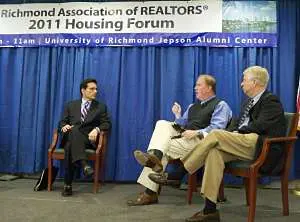 As the snow melts, the flowers begin to bloom and the birds (and bugs) emerge, so do For Sale signs. The spring market is when the large number of homes in our marketplace will transact. Sometimes it is January and sometimes March, but once the weather breaks and summer vacation seems almost reachable, the buyers and sellers emerge and begin their mating dance to see who sells what to whom and for how much.
As the snow melts, the flowers begin to bloom and the birds (and bugs) emerge, so do For Sale signs. The spring market is when the large number of homes in our marketplace will transact. Sometimes it is January and sometimes March, but once the weather breaks and summer vacation seems almost reachable, the buyers and sellers emerge and begin their mating dance to see who sells what to whom and for how much.
It will happen again this year.
It happens every year (well, except 2009, but that is a different story.)
So we know houses will change hands…but for how much? That is the question everyone wants to know.
Valuing Housing
What Realtors are taught about helping sellers establish values has not changed in the several decades I have been in this industry. We were/are taught to find three recent sales which are similar in size, features age and geography and use some blended average to establish a price. The sales upon which the value is based are called COMPS (short for ‘COMParable Sales) and can be found by searching in the local MLS or public tax records.
But does it work?
Comping Looks Backwards
What is the flaw in looking at COMPS?
Well, COMPS are past events and what we are trying to predict is a future one. Additionally, these past sales, even if recent, may still have occurred in radically different market conditions.
See the chart below measuring the rate of sales each month. Do you notice any trends?
When the rate of sales in April/May is 30-40% higher than October/November, do you think it would be wise to use fall sales to price a spring house? Probably not.
Likewise, check this out. This chart shows the amount of available housing at any given point during the year.
A buyer will have significantly more choices in October than in April…think it impacts a buyer’s behavior? You bet.
(For additional market statistics showing Days on Market, Median Prices and Ask/Sale Ratio, visit our page on STATS)
Don’t Ignore Seasonality
While no one knows what the future holds, you can look to repeating patterns in the data to help guide you. If your best comp is an October sale and you are listing your home in March, be more aggressive. Also, do not expect to have the results of April if you are bringing you home to the market it September.
The bottom line is pricing is complex and cannot be distilled into a 3 home analysis. Without looking at timing, you are making an important decision but basing it on incomplete information.








